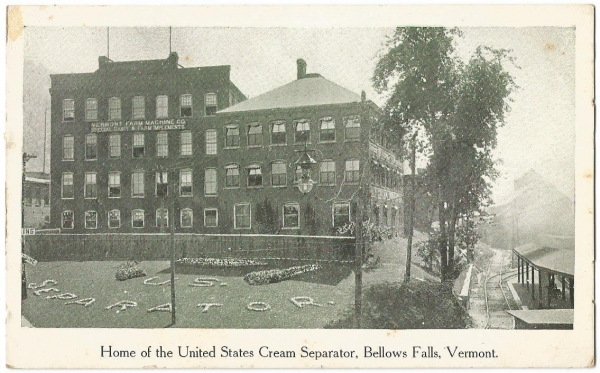TOWNSHEND — We celebrate Vermont's dairy industry for many reasons.
We know that dairy brings in $2.2 billion to the state's economy and accounts for 70 percent of agricultural sales. Jobs - 6,000 to 7,000 of them - in our state depend on dairy. In addition, New England depends on the state's milk production, with 63 percent of the region's supply coming from farms in Vermont.
The commercial dairy industry in Vermont did not begin until the demise of the world-renowned Merino sheep sector in the mid-1800s. History shows that dairy started slowly, with butter the first main product produced.
Dairy, from the beginning, has been well suited for our state's grassland economy. By the mid-to-late 1800s, the number of local creameries grew because milk could not be shipped long distances.
By 1900, 186 creameries and 66 cheese factories operated in the state. By the mid-to-late 1800s, St. Albans was known as the butter capital of the world, with one butter train leaving each week for the Boston market.
Buyers from as far away as New York and Boston came to the town each week to bid on blocks of butter, and by 1880 one-fourth of the state's butter production came from that area.
People in that era paid increased attention to dairy-cow genetics as many farmers came to realize that making good butter required good milk - and getting good milk required more than milking the old family cow.
The butter trade prompted the growth of entire new support industries like the butter-tub factories in Montgomery and Stowe, and the Vermont Farm Machine Company factory in Bellows Falls which made butter churns. During this period, Vermont butter won international awards.
Laws were enacted at the state and national levels to protect this industry. It became unlawful to serve any butter imitation product at any place of business in the state. When margarine was introduced, it was illegal to sell the product except in its original white color or form. (Some might remember, from the way-distant past, the yellow coloring sold separately to color the product.)
Changes in demand and in the industry itself took place when nearby cities reached out for fluid milk in the late 1800s and early 1900s.
Producing and shipping fluid milk to urban markets in other states created some new challenges for Vermont dairy farmers, who now depended on others for shipping and for marketing and had to comply with new health requirements. These new pressures led to the establishment of dairy cooperatives within Vermont and nationally to better control pricing and quality standards.
The first milk train left Bellows Falls for Boston in 1890, and by 1928, the profitability of Vermont's dairy farmers was linked to the fluid milk market.
* * *
A lot has changed over the years and will continue to change, as is the case for any industry sector linked to national and international markets.
Today, approximately $400 million of sales come from fluid milk and $650 million from cheese, with the remainder of the $1.3 billion in sales from other products like yogurt and ice cream.
More than 850 dairy farms are family owned, with the majority having fewer than 200 cows. Five percent of the 321 million gallons of milk sold is certified organic, and dairy cooperatives are important to those sales.
It is no wonder that dairy is so revered still in our state, with 97 percent of Vermonters saying that this industry is important to the state, its beauty, and its way of life.
As we think about our dairy industry and its importance to our state today, join your neighbors across the nation, as well as the state, in celebrating June as dairy month.
